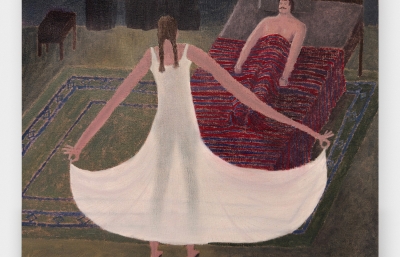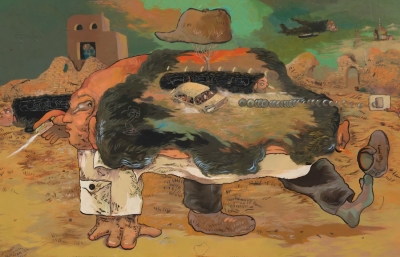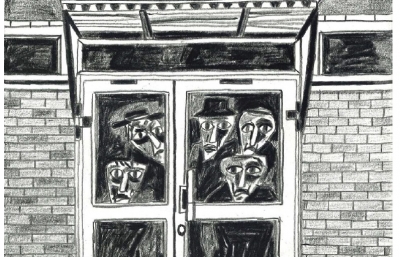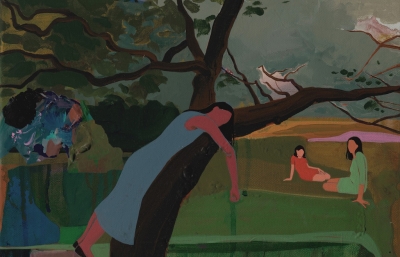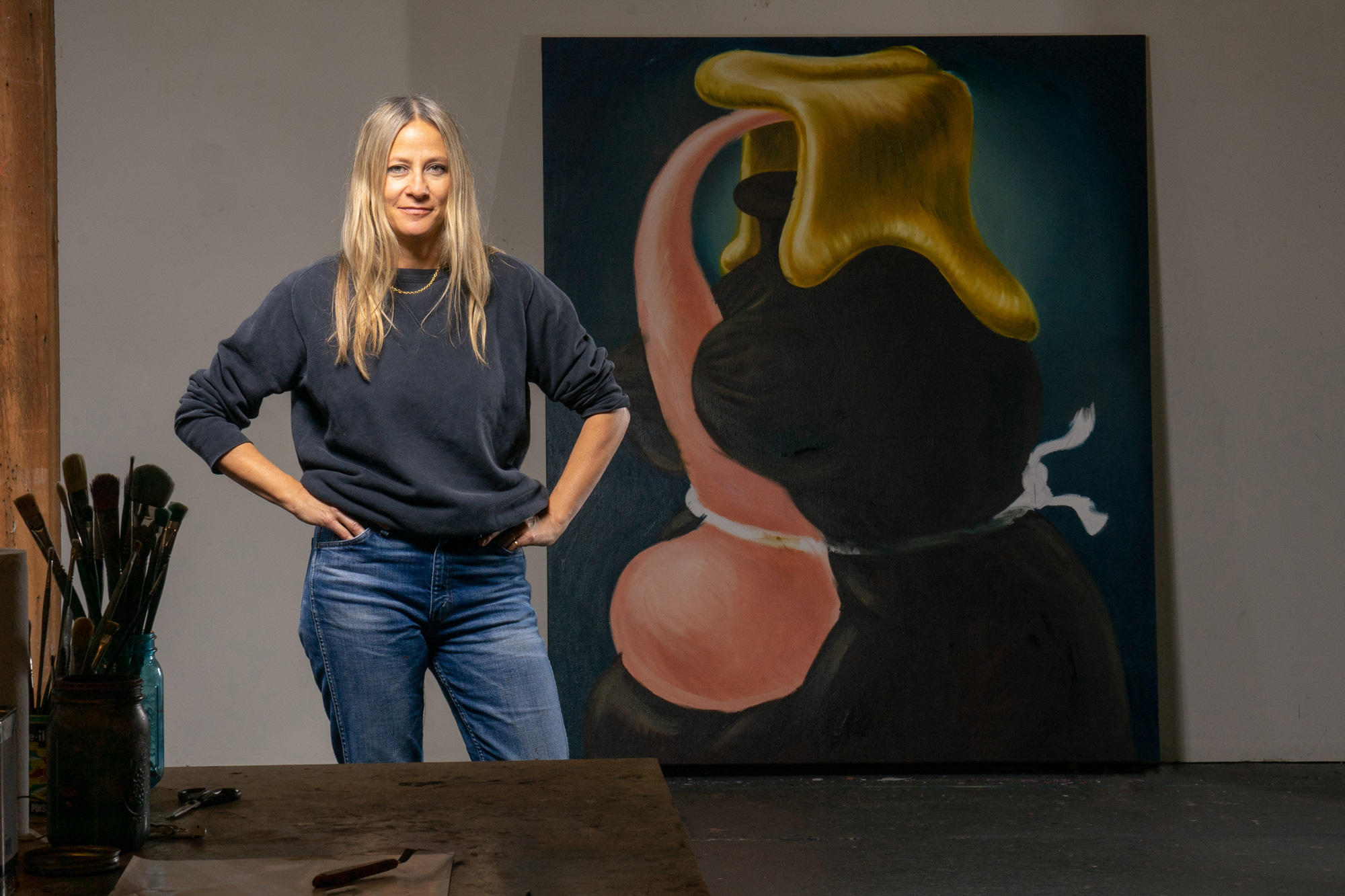
Louise Bonnet
Funny Beauty
Interview by Evan Pricco // Portrait by David Broach
I bought the book On Ugliness by Umberto Eco immediately following my interview with Los Angeles-based, Geneva, Switzerland-born painter, Louise Bonnet. She had mentioned this was one of her favorite books, and given the sublimely grotesque appearance of her artwork, I figured I should look it up. Eco had gone great lengths to describe his book as a look into the, “sordid, weak, vile, banal, random, arbitrary, coarse, repugnant, clumsy, horrendous, vacuous, nauseating, criminal, spectral, witchlike, satanic, repellent, disgusting, unpleasant…” You get the picture.
Bonnet’s work does the exact opposite for me. For questions of ugliness, sex and gender that may come up in her paintings, there is absolute classical and contemporary beauty. She admits, there is humor and, yes, serious examinations of the body and how we perceive our physical selves in the twenty-first century. Eco writes that beauty and ugliness are complicit concepts, and perhaps that fine line is the best place to start with the works of Louise Bonnet.
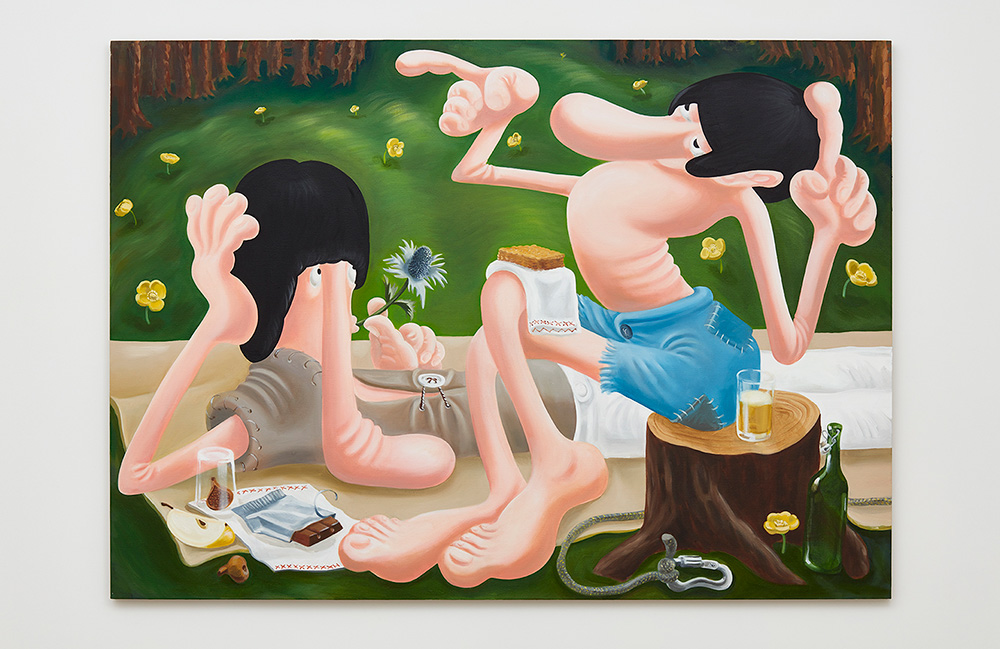
Evan Pricco: I was really happy to see your show in Berlin at Max Heltzer. It was a nice little respite from the other works I saw on that trip. But for some reason, it surprises me you have been in Los Angeles for so long. The work still feels European to me.
Louise Bonnet: I have been in LA since 1994, actually.
What was your work like in 1994?
I went to art school, but I was doing more of graphic design or illustration work for clients. I had never tried oil. Everything changed when I tried oil. Before that, it was always acrylic. It was really flat. In 2008, when I showed at Subliminal Projects, it was the first time where I was making art for a gallery, myself, and not someone else.
It's interesting that you went to school for graphic design. I guess it makes sense because it seems that all my friends who are Swiss studied graphic design. Just the stereotype?
It's absolutely true. When I came to Los Angeles, I thought I would be here for a year, to take a year off. And then I never left.
When you were a kid, did you play with Play-Doh or clay or anything? Looking at your paintings, I was thinking, “She could probably do some really good work with clay.”
That's funny. I didn't have a TV, so I drew all the time. I think my mom was one of the only people I know who didn't try to do pottery in the 1970s.

You said you found oil, and that was this big change for you. I was looking at those early Subliminal works, and they are tame compared to what you do today, just these lovely rendered portraits. But oil changed the game?
Subliminal was so great because it was the first time I realized I could do art without being asked about my job. It was a bigger world for me. I really loved doing it, so for a few years after, I tried to just really make it my job. I had been trying to make acrylic do stuff it can't do. But it was not clear to me because I never tried oil. It seemed a little scary. People make it seem really, really complicated.
Is it like a “pinky-up” thing?
I think it may suddenly seem serious. You are painting with oil, serious business. But a friend who came to my studio a few times was like, "You really should try oil. It seems like that's what needs to happen." I went and got some, watched some YouTube tutorial videos. And it was so clean! It was amazing. It was what I had been waiting for my whole life, really.
When did these particular characters start formulating? Sometimes I hate saying that, characters. But it feels like I'm following a path of these figures getting reimagined through these different canvases and different kinds of bodily changes, especially over the last few years.
I think when I found oil, I suddenly could do these shapes and create this sort of 3D effect. You can really have depth and have a real world rather than a flat appearance. So it was really just doing it every day for a few years and trying to experiment. I go to work every day and just do it, so then these figures evolve.
You achieve this style that almost feels like a paused moment in a Warner Bros cartoon, like Wile E. Coyote or Bugs Bunny, where the action occurs and their bodies distort and stretch but come back to their original composition. I’m not saying the work is cartoony, but there is a pleasurable suspension of belief, obviously, with the human form.
Yes, I did watch some cartoons, that was also later. It was probably French TV, and I think I finally got a TV when I was in high school. The French really love Tex Avery and Popeye. When you actually draw like that, you can make complicated stuff so clear, so fast. And, in Geneva, where I grew up, the comic is important. People really like drawing. A lot of posters are hand-drawn and there's a big comic book graphic novel scene.
Even though it's absolutely part of my upbringing and everything, I feel like people think my paintings are cartoonish and I have a bit of a problem with that.
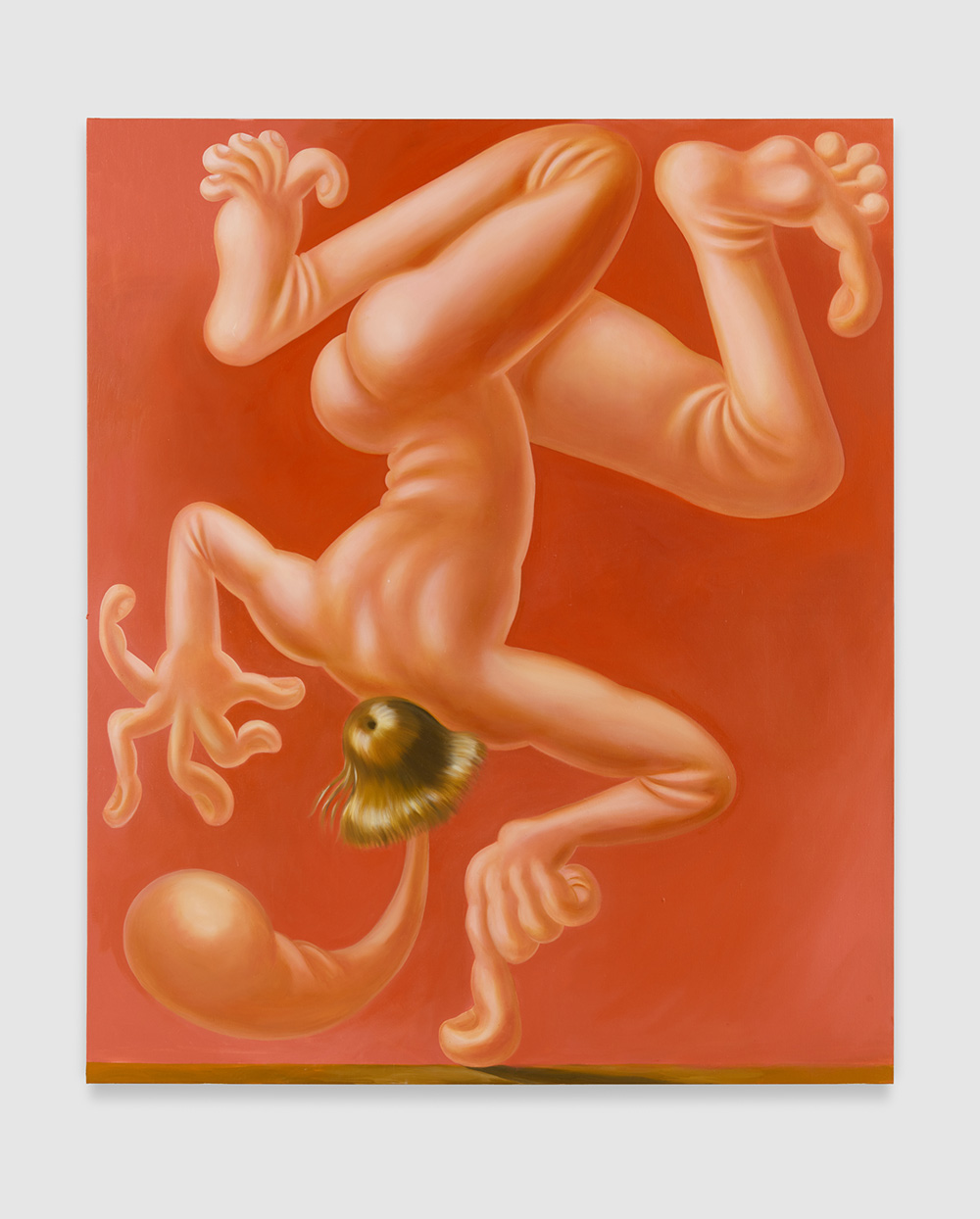
I don't think they're cartoonish, but I think there are two ways to look at them. Walking out of the show in Berlin, I was thinking about how you can look at them from a child’s eyes; you could go in there and they could be really funny, or you can get maybe a little silliness out of them. There's also a very serious commentary about body image and the way bodies are perceived, so it can be two opposing views. I don't know if cartoonish is the right word… I think funny might be a better word?
Absolutely. I like that, I mean they're supposed to be pretty funny.
For instance, the one with the breast and the milk being squirted out. When I put that on my Instagram, people were like, "Whoa, that is kind of crazy." Originally, they thought it was by a male painter, and it really threw them off when they saw your name. It was almost like it became more serious to the viewer, if that makes sense. I think maybe we're in a particular time now where things that were funny four years ago are hard to laugh at now, because everything seems a little bit more serious all of a sudden. The stakes have changed, and that’s good.
I know that, in my case, people mistake the nipples for something they aren’t. It's not actually about the nipples—it's not about nipples—it's about the sweater over the nipples and the action and reactions with the body doing stuff to other things. Being out of control. But it is actually also a little warrioristic because the character’s not looking at you. So, yes, there's sometimes a little relief for the viewer when they realize a woman made the painting. But yes, it's true that sometimes I've had to explain what my paintings were not about.
Have you noticed slightly different readings of your work in the last couple years?
I don't have an agenda, or I don't have a political agenda. But with gender in my work, sometimes it’s not very clear. And it’s not that I'm unclear, but I don't know how you feel fully one thing or another. I also don't fully understand what I'm doing, you know what I mean? When people mention the gender of the people in my work, to me, it's not extremely important, actually.
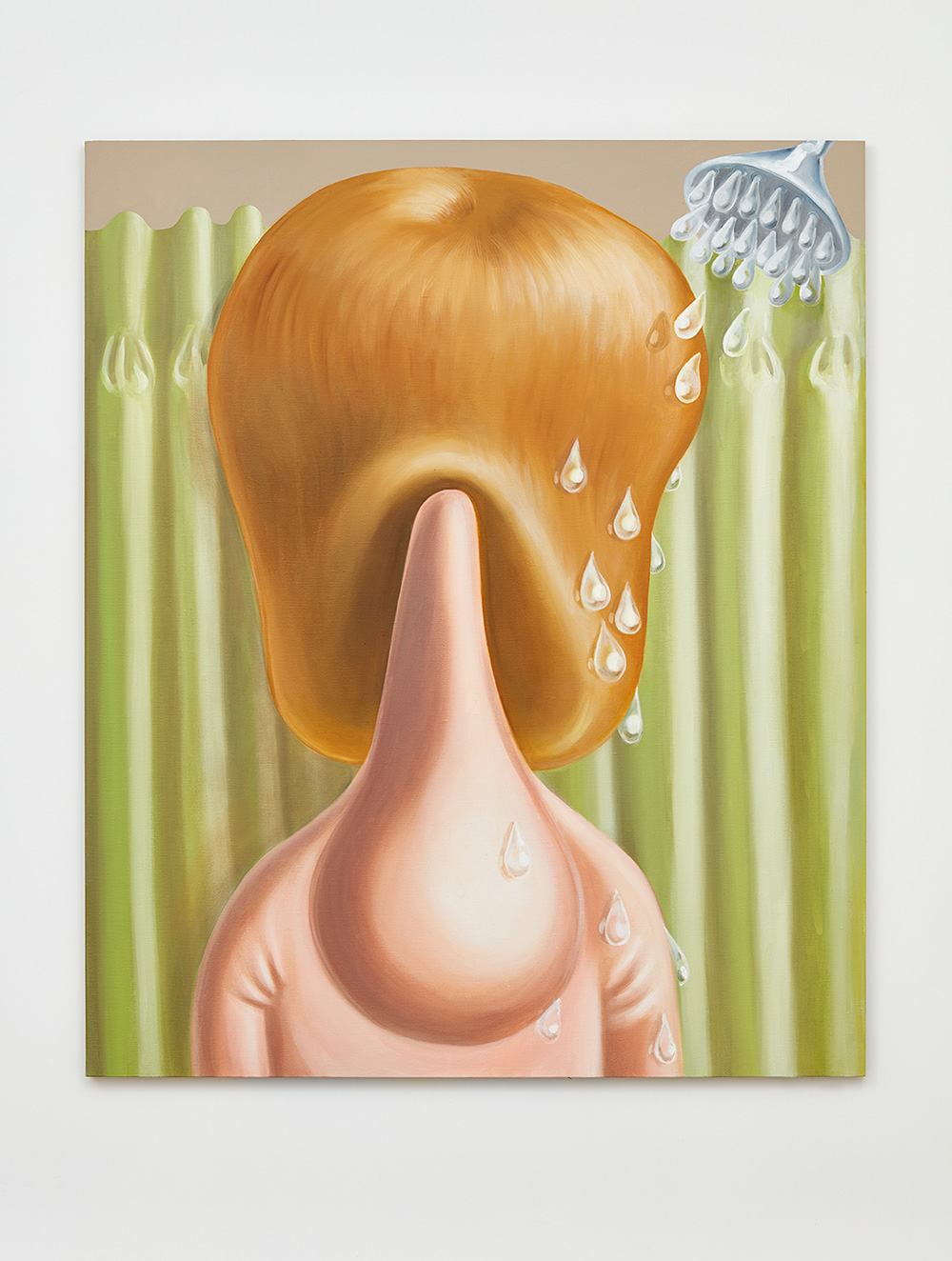
Another thing I really liked in this show was how purposeful and strong the drawings were around the larger paintings. Those were really illuminating because they didn't feel loose. They could stand alone and not just function as companion pieces.
They're not. I try to do paintings from drawings, and it never works. It can work maybe to a certain point, and then it really doesn't. Then you have to change the painting. It can't be vague. On a drawing, you can sort of leave things a bit vague or not resolved, but on a painting, that doesn't work at all. You need to know what you're doing. It needs to be resolved.
So scale really matters with your work. The bigger pieces, the fact that they really command a room, all those questions of, "Is that a man or a woman," are right in your face. Also, the scale allows you to just get right up into the works and look directly at the details.
Totally. I think it's true that my paintings don’t really show enough detail, since you can’t really see what they actually look like on Instagram. They’re tight and controlled; you can see the paint in the brush, and you can't really see that on a little picture. It looks like so much cleaner in the little picture.
When you moved to Los Angeles in 1994, there was this major underground scene, a burgeoning scene of pop surrealism that really dominated the early years of Juxtapoz but also really had a Southern California aesthetic. Did you know of that art world when you moved to LA, and did anything surprise you when you moved there?
I was fully doing graphic design when I moved here. The only thing I recall is that sort of Swingers aesthetic when I got here. I really didn't know anything about that art scene then.
I think also, now, in retrospect, there is a tendency for people who moved here to think, “Oh, we made it awesome here in LA, we made it more artsy now.” Like there was never a scene here, and that's so not true. It always was and is really great. I just wasn't in a scene for a long time.
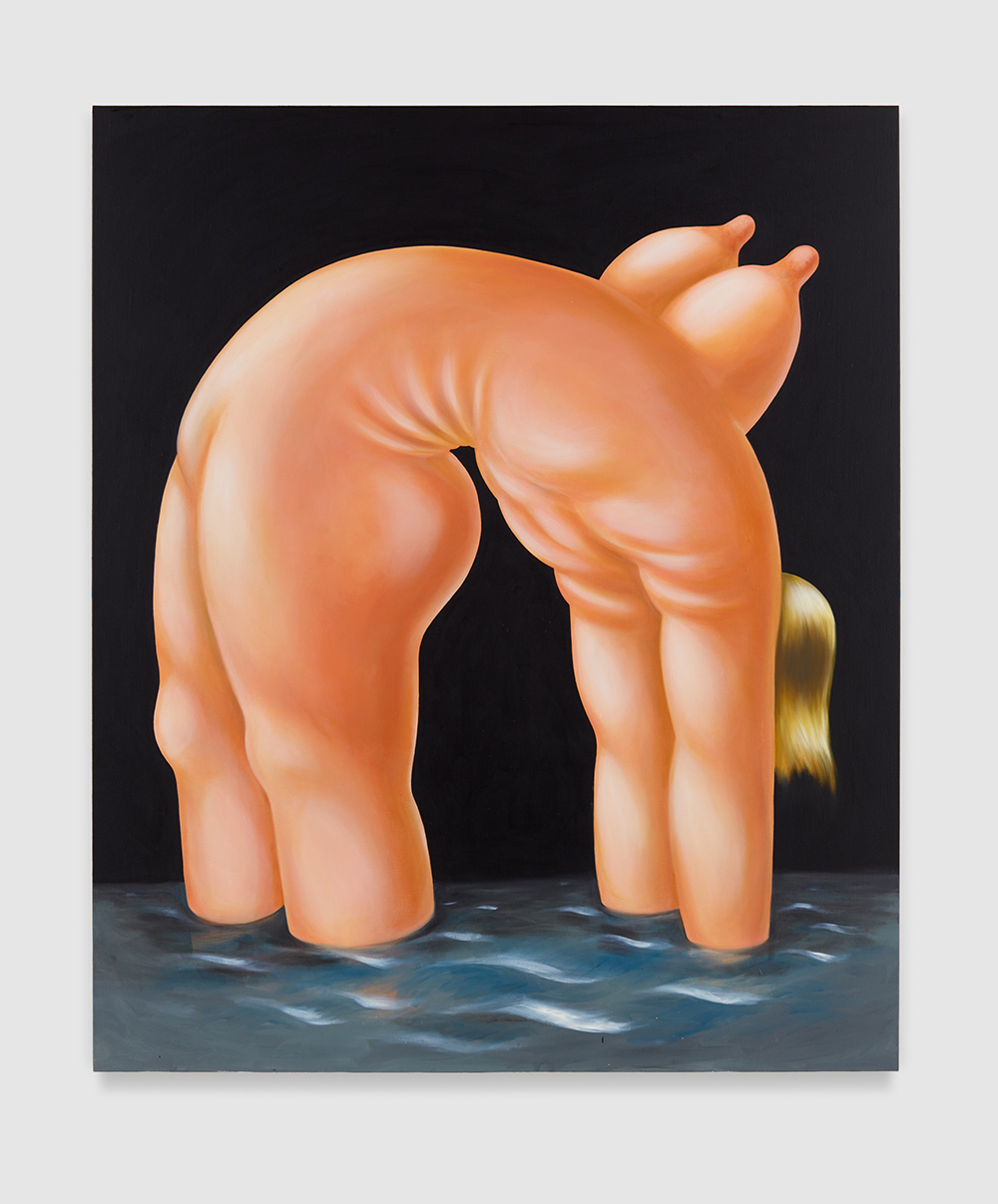
Do you feel like a California artist now?
Oh yeah. It's true that Europeans usually like my work more readily somehow. I don't know if there is some sort of link? I think this year I will have been in California as long as I was in Europe. So, yes, I feel absolutely Californian.
Your style and way that you depict the body definitely has a sort of past Master’s grotesqueness. What is the most awkward comment you've heard about these bodies when people talk to you about your work?
Well there's this nipple problem. Oftentimes, people ask me if I'm going to keep painting the noses like that. They ask, "Are you gonna keep doing this nose thing?"
We live in a world where every single image that is shown to us on TV, social media, whatever, is all kind of fake and manipulated to begin with, so why are people so concerned about an artist morphing and reimagining a body with paint?
People think I’m promoting patriarchy by showing boobs, or that it was about promoting sex, I guess? I'm not entirely sure, but I think that's what the problem was.
Do you have some personal favorite artists who have influenced you?
R. Crumb was definitely an influence.
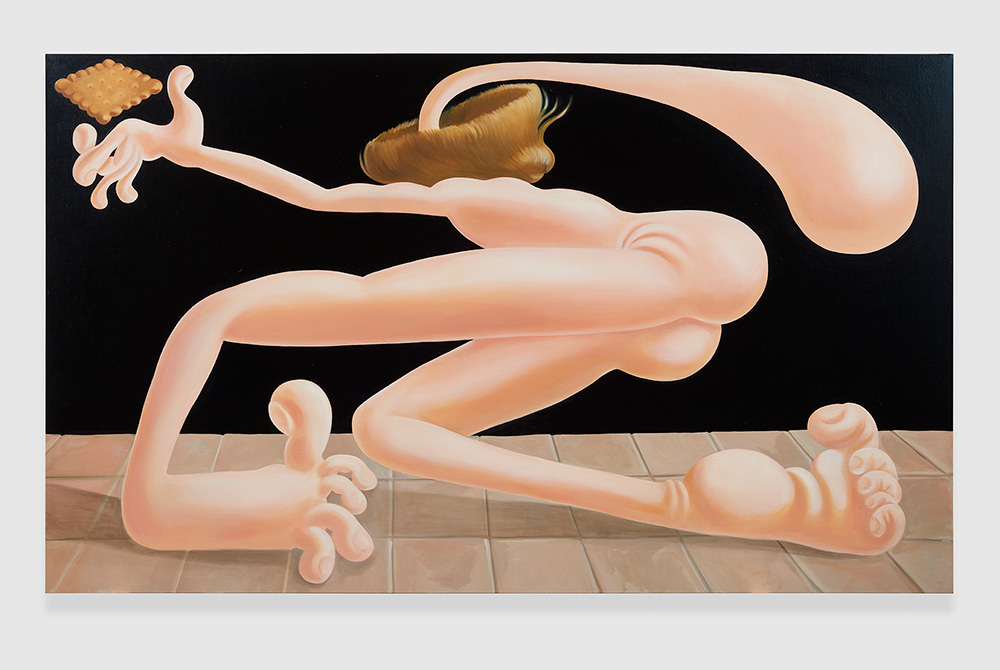
Talk about someone who, at least in this day and age, might have to answer a few nipple questions…
Right. Yes, I think the problem is that art should be the only place where you can do absolutely whatever you want. That's the only place where there's no... I mean, you can dislike it and have a problem with it, but there should be no censorship.
Now that I think about it, I actually try to not really look at too much art stuff because I feel like it gets in and then comes out in ways that I don't want it to. I look at a lot of Flemish Renaissance portraits and stuff like that. There's this book I have that's my favorite. It’s called On Ugliness, it's Umberto Eco but it’s all about pictures. It's all the representations of evil and ugliness in art, but very smartly done..
Do you think your characters are ugly?
That's what he's talking about in the book. I don't think so, no. I actually don't. Sometimes I see people's reaction and I think, am I just used to it? But, no, I really don't care, I guess.
@louisebonnetstudio

